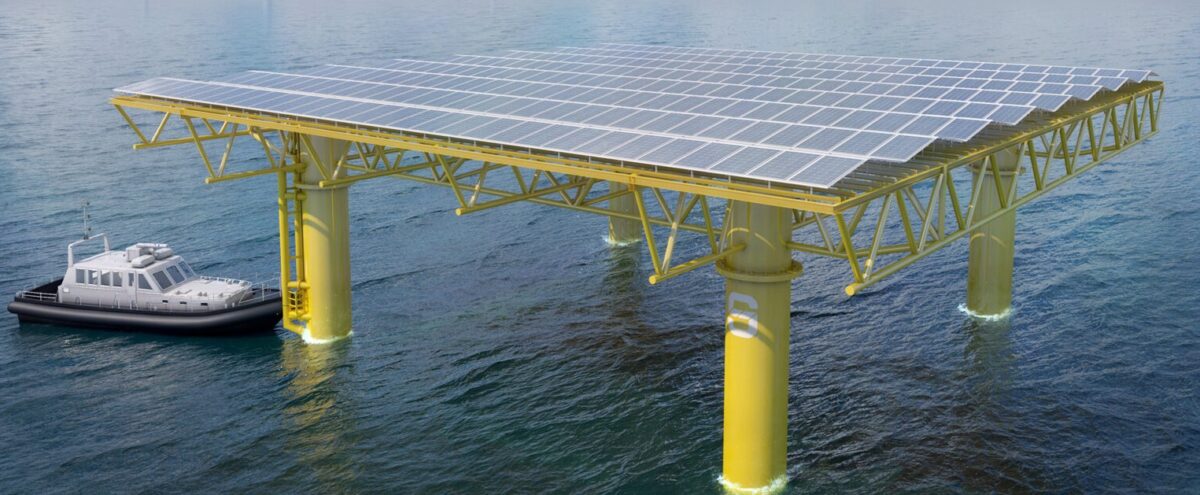A Belgian consortium – including the Tractebel engineering subsidiary of France’s Engie – plans to switch on a floating PV pilot project in waters off the port of Ostend, on the Belgian North Sea coast.
The group – which also includes Dredging, Environmental and Marine Engineering NV (DEME), marine offshore specialist Jan De Nul and Ghent University – said the project’s main contractor, Equans, is now carrying out final assembly.
The group says it built the array’s floater with an unspecified type of lightweight carbon fibre material, which presents potential benefits for offshore use, but is not often used in harsh marine conditions. Optical embedded fibres and sensors attached to the structure will assess whether the material’s structural integrity (vibrations/fatigue) is in line with the numerical models and results obtained from the ocean wave tank and wind tunnel tests.
The consortium, which also has the support of Ghent University, plans to collect data from the floating plant for a year to advance the development of offshore photovoltaics on a large scale.
“It is important not only to minimize the attachment of excessive marine growth to the floater to maintain its buoyancy,” the group said. “Specific tests will be conducted to assess combining the floater systems with mussel cultivation and oyster farming, which present specific challenges.”
Tractebel is also testing another offshore solar project in the North Sea. The group, which includes DEME, solar installer Soltech NV and Ghent University, installed a $3.26 million (€2 million) array near an aquaculture farm and offshore wind project.
Expectations for this new application are high. Offshore PV in combination with wind farms on the high seas could enable the use of multiple locations and existing infrastructure for electricity.
In a study published in 2020, scientists from Utrecht University in the Netherlands claimed that offshore PV plants could be more productive than ground-mounted arrays, after running a simulation comparing a North Sea project to a conventional system at the Utrecht Photovoltaic Outdoor Test field. The Dutch government says it plans to commission 3 GW of offshore PV by 2030.
This content is protected by copyright and may not be reused. If you want to cooperate with us and would like to reuse some of our content, please contact: editors@pv-magazine.com.









It is about 500 panels so 250kw, about 1MWh/day there making about $80/day or so is very little power for the cost of the floating racks, systems.
Nor do people appreciate how expensive needing a boat/crew to get anything done raising the maintaining cost 5-10x of a land version.
What they should be doing there is tidal generators is far more suited, more power/$ than this solar will be.
They and wind should be on tri hulls that come into port by themselves for service.